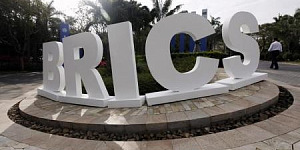Nigeria's banking system has a stable outlook for 2017, reflecting its banks' stable deposit funding bases, high local currency liquidity, resilient capital buffers and likely support from the authorities in case of need, Moody's Investors Service said in a report.
However, while the operating environment will gradually stabilise, conditions will remain challenging, with high inflation, reduced capital inflows and deficiencies in foreign exchange markets continuing to restrict the operations of Nigeria's import dependent economy.
The report, "Banking System Outlook -- Nigeria: Foreign Currency Pressures and Asset Risks Will Stabilise Over Our Outlook Period" is now available on www.moodys.com. Moody's subscribers can access this report via the link at the end of this press release. The research is an update to the markets and does not constitute a rating action.
"While we foresee continued loan quality and foreign currency liquidity challenges for Nigeria's banks over the coming months, we expect these challenges to gradually ease over the second half of our outlook period, in line with our expectations of a gradual recovery in economic activity," said Akin Majekodunmi, Vice President -- Senior Analyst and the report's co-author.
Moody's expects the banking system's non-performing loans (NPL) ratio to deteriorate over the next 12 months to between 12% and 14%, from 11.7% at the end of June 2016.
As NPLs are a lagging indicator, the ratings agency expects continued upward pressure on NPL metrics in the near-term. However, write-offs and loan restructurings, as well as higher GDP growth projections for 2017 and 2018, will moderate the pressure on NPLs.
The banks' high exposure to the oil and gas sector - estimated at 29% of the aggregate loan book as of June 2016 -- will remain one of the main sources of asset risk, along with foreign currency loans and import-dependent borrowers' vulnerability to naira exchange rate movements.
High provisioning requirements will weaken bottom-line profitability, although pre-provision profitability will remain strong.
Following a contraction in real GDP of 1.5% in 2016, Moody's forecasts a recovery to 2.5% in 2017 and 4% in 2018. Moody's projects real lending growth of 5-10% compared to 2016's contraction of 5%.
Moody's expects system-wide tangible common equity (TCE) to decline slightly to 13.2% of adjusted risk-weighted assets by year-end 2017 from 14.6% at the end of June 2016, primarily due to increased loan loss provisions and the effect of naira depreciation on the balance of risk weighted assets denominated in foreign currency.
However, Nigerian banks' capital metrics will remain in line with similarly-rated African peers and will be sufficient to absorb losses under Moody's baseline scenario.
The Nigerian Banking System Outlook expresses Moody's expectation of how bank creditworthiness will evolve in this system over the next 12 to 18 months.








































